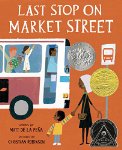 Over-scheduled Andrew
Over-scheduled AndrewAshley Spires
Picture Book
For ages 5 to 7
Tundra Press, 2016, 978-177049-484-8
Andrew loves to perform in plays, and so he decides to join the school drama club so that he can “wear costumes and perform on a real stage.” Andrew’s best friend, Edie, helps him learn his lines as they walk home from school together. Sometimes they end up climbing a tree or playing a game along the way and that’s always fun.
Though Andrew is a natural when it comes to acting, his drama teacher suggests that he try public speaking so that he can learn how to project his voice more. Andrew joins the debating team so that he can work on making his voice stronger. It turns out that Andrew is so good at debating that his friend Calvin suggests that he join the chess club.
When Andrew has a hard time keeping up during the dance routines when he is rehearsing, he decides that what he needs to do is to “improve his coordination,” so he attends ballet and karate classes.
Somehow Andrew then finds himself joining the tennis team, working on the school paper, and learning how to play the bagpipes. He joins the French film club, takes singing lessons, and signs up for Spanish lessons because knowing another language is “just plain useful.” Up until now Andrew has been able to manage his extremely full schedule, but now he hits a wall. Andrew is just doing too many things.
Many people over-schedule their lives. They fill every spare minute with an activity of some kind until they barely have time to eat or sleep. They cannot have a social life and are constantly running from activity to activity.
With humor and sensitivity Ashley Spires (who brought us the graphic novels about Binky the cat) shows us how a young owl’s life turns into a nightmare when he takes on too many activities. Everything Andrew does is important and interesting, but together they are just too much. Children, and their grownups, will enjoy seeing how Andrew solves his problem and how he finds a schedule that works for him.








